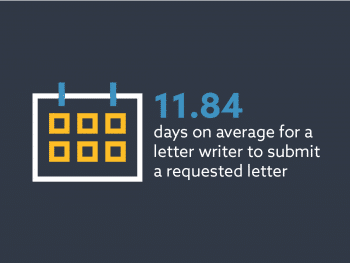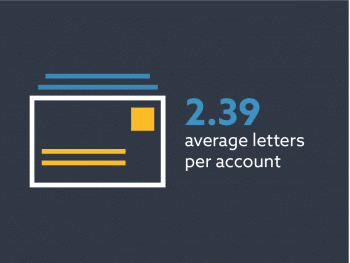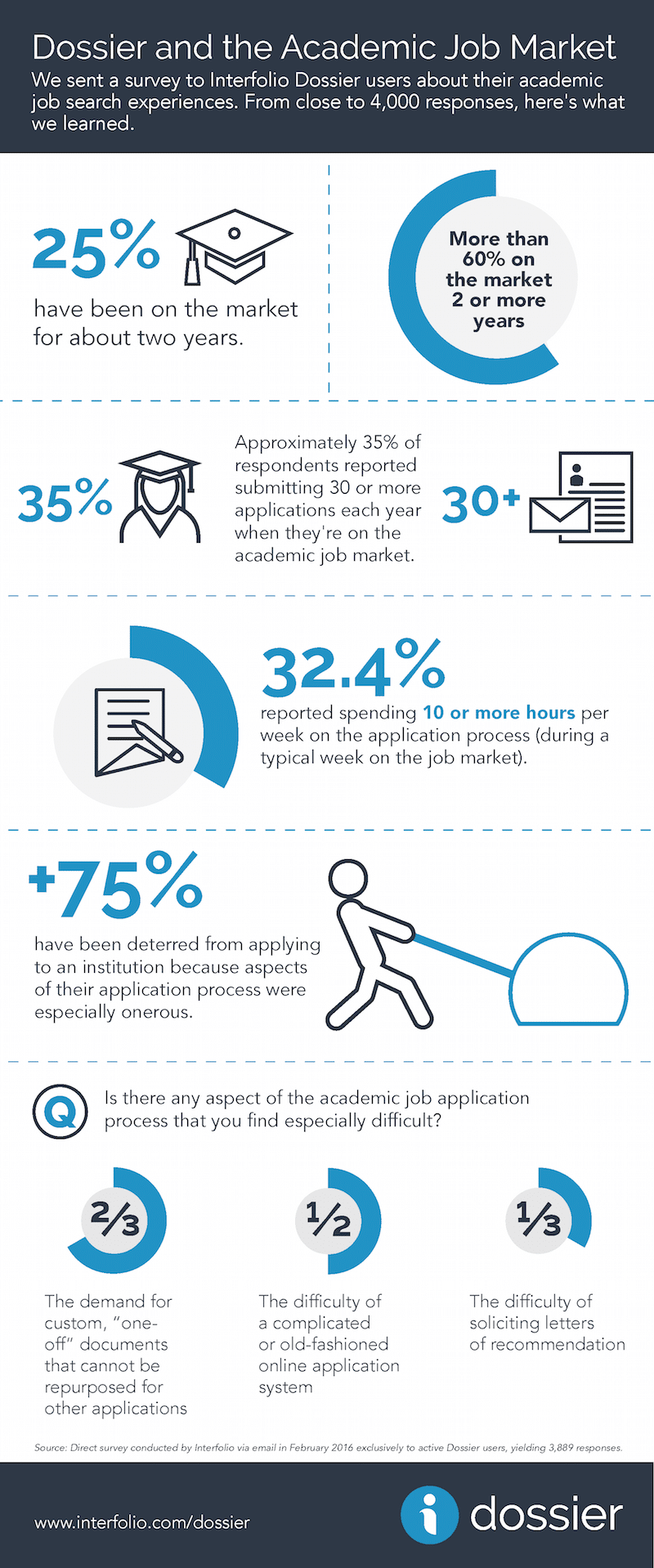Looking for technical instructions on how to use your Dossier? See these help articles.
Among vendors of higher education technology that address faculty data challenges—like faculty activity reporting, academic workflow, and academic portfolios—the Dossier is perhaps Interfolio’s most distinctive asset. It’s a private, lifelong online space for career development that belongs to each individual scholar.
Throughout 2017, having done much research across higher education to understand how individual faculty interact with their schools’ faculty personnel processes, we steadily added a series of special features to connect Dossier with our enterprise faculty technology suite for institutions of higher education.
Today, we call that bundle of special features Dossier Institution—the faculty member’s dedicated space to organize their materials and faculty data, with useful integrations into Interfolio at their school.
Here, we’ll:
- Summarize the origins and growth of Dossier Institution to date.
- Look at today’s feature release, the first of 2018: the ability for a scholar to share their materials and get line-by-line comments for feedback and mentoring purposes.
- Muse about the Dossier’s increasingly central role in faculty information management.
If you are seeking technical instructions for using your Dossier, you might want to take a look at these articles.
Origins: the value of academic portfolio software at the enterprise level
First introduced in 1999, the consumer version of Dossier is Interfolio’s widely adopted academic portfolio product for scholars on the job market, most commonly used to manage confidential letters.
When we launched Interfolio Faculty Search in 2012, Dossier served as the point of entry for job applicants, and in 2014, it was an obvious companion for those going up for faculty reviews through Interfolio Review, Promotion & Tenure. And (sneak peek!) Dossier Institution may just be the natural solution to a fundamental obstacle in faculty activity reporting: giving professors a compelling reason to maintain current faculty data.
To begin with, Interfolio focused primarily on the problem of faculty candidate preparation for academic reviews—such as tenure, promotion, annual review, or reappointment. As many in higher education had already mused, how could smart technology simplify and shorten the process of compiling your accomplishments?
Introducing institutional guidelines
Our first major product development in this direction (about a year ago) was the institutional guidelines feature. With institutional guidelines via Dossier Institution:
- Institutions using Interfolio Review, Promotion & Tenure gained a way to more clearly communicate to their faculty the official requirements for what candidates must submit for certain kinds of reviews (an important consideration).
- Faculty members anticipating future reviews gained a new sign of transparency and consistency from their employer about expectations for success.
Reuse past packet materials
Continuing to think about the experience of faculty candidates going up for review, our next development choice was to eliminate redundant work for faculty around repeated, routine reviews from year to year. We added the ability for faculty to freely import materials from any of their past Interfolio Review, Promotion & Tenure packets when assembling a new packet for a current or upcoming review.
Whether you think of this as an addition to the enterprise module or an investment in the capacity of the Dossier, the ability to reuse past packets served two known goals that institutions had clearly, repeatedly voiced to Interfolio:
- It’s an efficiency and preparation tool for the faculty candidate, helping them put their best foot forward by eliminating hours of redundant re-assembly work from year to year.
- It’s a transparency mechanism for the institution, facilitating a fair consideration of the candidate’s progress because they can attach the exact correspondence they received in past academic reviews.
Linking institutional guidelines with collections
Some time after we’d rolled out the institutional guidelines feature, we took advantage of the existing collections feature to provide another boon to faculty candidates: the ability to directly create a collection in their Dossier based on a particular set of institutional guidelines (for example, based on the tenure guidelines for the College of Arts & Sciences). It helps faculty make effective use of their Dossier as a staging ground to assemble or curate their materials in advance of known future reviews.
For example, if I’ve just started in a tenure-track history position, I can pull up the history department’s tenure guidelines in my online Dossier and, with a click, create a new collection in my Dossier that maps directly onto the stated requirements for my tenure packet—several years from now. And then, when the time comes to initiate my official case through Interfolio, I can import that collection straight over to my Interfolio tenure packet.
Sharing for feedback and mentoring (NEW)
And just today, we expanded Dossier Institution in another major way: by introducing sharing of materials and collections in Dossier.
Starting today, any faculty member with Dossier Institution can share individual files and collections of materials stored in their Dossier with other individuals at their school, and can enable those individuals to make line-by-line comments on documents. (We have also included a version of this feature in Dossier Deliver, the premium consumer package for scholars on the job market.)
The new Dossier sharing feature gives faculty a way to collect feedback on academic materials from others at their institution—including documentation of research, creative production, teaching, or service—without leaving the Interfolio environment where their work is stored. And it accommodates ongoing input on academic case materials, whether outside of an formal institutional workflow or as part of one, such as in the case of a mentoring letter.
The sharing feature is a significant step forward for Dossier, and we are interested to learn about its use among our client institutions. As usual, our product team has already conducted extensive research to understand a variety of real-world scenarios where scholars seek feedback on their work. The result is a flexible feature that accommodates a variety of collaborative needs.
Do you have Dossier Institution, and want to see what sharing looks like? Go ahead: sign into your Dossier, open up any document, and select “Share.”
Further developments for Dossier Institution in 2018
As mentioned earlier, we foresee Dossier Institution playing an increasingly central role in the long-term success of the Interfolio faculty information system at colleges and universities. When faculty benefit from new technologies and services, their institution benefits as well.
One major avenue of exploration is how the Dossier could serve, in a responsible way, as the avenue for ordinary faculty data collection at client institutions. This is a major hurdle in faculty activity reporting—so finding smooth ways to build routine data management into moments when faculty access their academic portfolio should be a win-win.
Dossier Institution User Help Articles:














